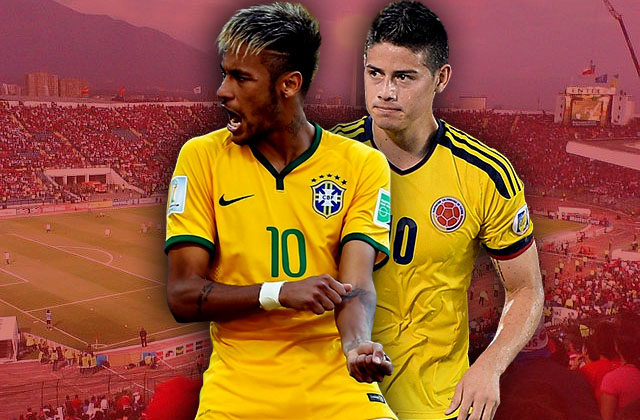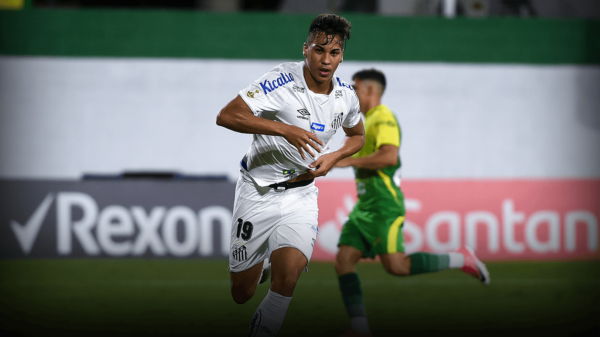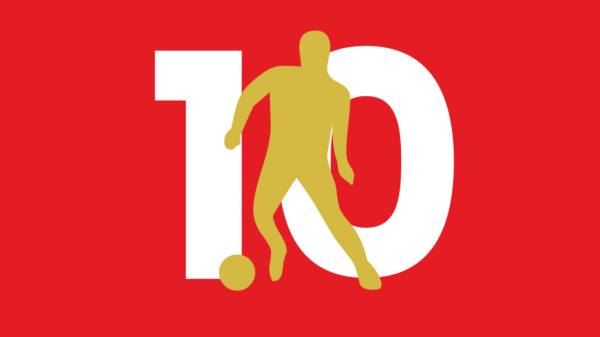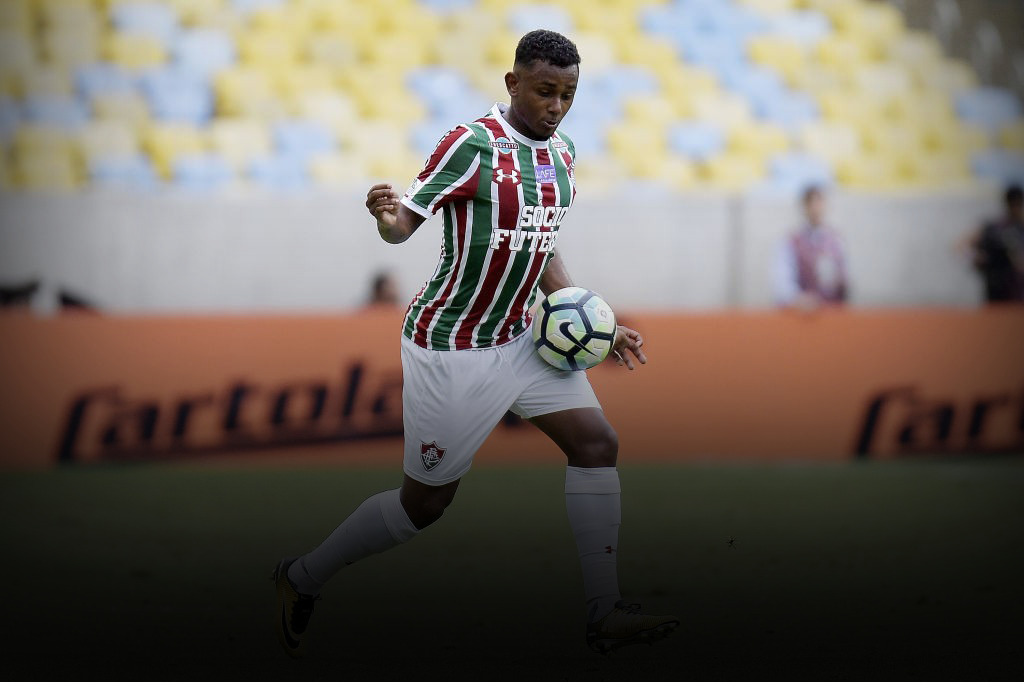Group C has easily been the Copa America’s most engaging, as shock wins by Venezuela and Colombia saw all four teams level on points entering the final match day. With a resurgent Thiago Silva leading Brazil to victory over Venezuela to top the group, the final placing may not seem like much of a surprise. However, with Brazil needing a last-minute winner to beat Peru, Neymar’s suspension, and a host of strong defensive performances, many from unsung, domestically based players, these six games provided us with multitudes of knife-edge tension. As the three survivors lick their wounds ahead of the quarterfinals, here is a brief look back at some of the keys to the way things played out.
Key Tactical System
Although Venezuela’s composed 4-2-3-1 in the group’s opening match was impressive in how it firmly shackled the dangerous pair of James Rodriguez and Juan Cuadrado, the duo’s subsequent performances have taken some of the luster off of that result, as neither has been anywhere close to his best over the intervening matches. Brazil were generally a mess, with and without Neymar, so it is only logical to hand this to the side that has surpassed most expectations ahead of the tournament: Peru.
Flouting the old adage that “no one plays 4-4-2,” manager Ricardo Gareca did just that, lining up in that manner for the second two matches, his hand somewhat forced by the absence of Jefferson Farfan. Using leather-lunged full backs/wingers Luis Advincula and Juan Vargas to shuttle up and down the flanks and packing the midfield with holding pair of Josepmir Ballon and Carlos Lobaton, Peru gamely exceeded expectations by taking Brazil to the limit and similarly frustrating Colombia, earning second place in a difficult group despite only scoring twice. With a lack of play-making ability from which to choose and an almost non-existent amount of preparation, the discipline, cohesion and graft on display from Los Incas thus far has been remarkable, and while their victory over Venezuela was admittedly made much easier by the sending off of Fernando Amorebieta, for the team to stifle such highly regarded opponents is a real achievement, and Gareca’s bold tactical moves have paid off handsomely. With a more than winnable match against Bolivia in the quarterfinals, and danger man Farfan returning to full fitness, a shock semi-final place looks possible, an outcome few would’ve predicted in advance of the tournament.
Game-changing Performance
Not included in Brazil’s tense win over Peru due to a knock, Thiago Silva recovered to replace David Luiz against Colombia, and acquitted himself fairly well in a chippy affair. Against Venezuela in the final match, however, the Paris Saint-Germain man played with all of the verve and command that we have seen from him at his best. Scoring the game’s first goal from a corner with a sublime volley, Silva was also unlucky to have a second kept out early in the second half, demonstrating to the fullest just how much of a handful he can be at set pieces. In addition to giving Brazil a further attacking threat necessary in the absence of Neymar, he also did quite well to limit Salomon Rondon.
Rondon had been quite the handful for Colombia in the game’s first match, and was always going to be the danger man as Venezuela looked to hit Brazil on the counter, hoping a for a result similar to their victory over Los Cafeteros. Against Brazil, however, the powerful striker was all but anonymous, well-marshaled by Silva. Stripped of the captaincy by Dunga, it would have been all too easy for the defender to pout as Brazil stumbled to an exit or third place finish, but with his inspirational performance, he showed that there is more to this team than Neymar, raising his country’s hopes with Paraguay firmly in their sights for Saturday’s quarterfinal.
Talent Radar Best Young Player
This was decidedly the most experience-laden of all three groups, with all four sides picking largely veteran players, leaving a shortage of young players who meet our 22-and-under age requirements. Peru’s Yordy Reyna looked bright in a few substitute appearances, but was far from instrumental in his side advancing. Colombian central defender Jeison Murillo turned in a fine set of performances, including the match’s solitary goal against Brazil, but unfortunately just misses the age cutoff. Brazil’s Fred started two matches, but was largely ineffective, operating in isolation on the left wing and being subbed off at half time against Colombia.
The only player who fits the age requirements (although he turned 23 during the tournament) and started and finished all three matches, then is Peru’s Carlos Ascues. A central defender, he partnered Eintracht Frankfurt’s Carlos Zambrano impressively as Peru managed to finish second in the group, shutting out both Venezuela and the vaunted Colombia. Having spent much of the past two seasons in Peru after failed stints with Benfica’s B team and Greek side Panetolikos, Ascues was captain of Peru’s U-20 side in 2011, but didn’t break into the senior squad until late last year.
Often employed as a defensive midfielder or right back for FBC Melgar, his current club, Ascues’ initial inclusions in the starting XI were in that position under Pablo Bengoechea, but with Ricardo Gareca installed in February, he was moved back, displacing the more experienced Christian Ramos. With a good eye for a pass as well as being an adept player with the ball at his feet, Ascues was still able to be helpful going forward from central defense, aiding Peru’s somewhat limited attack as well as providing an upgrade on the undersized Ramos. Saving his best performance for the final game against a desperate Colombia side needing a goal to ensure their passage to the knockout stage, Ascues had no problem dealing with Radamel Falcao or Jackson Martinez, his combination of size and pace repeatedly stifling the strikers’ best efforts. With central defenders being in such high demand across Europe, perhaps the time is right for Ascues to try his luck again on the continent, but no matter what the transfer window brings, the player’s assuredness in such a pivotal position against top class opposition was truly impressive, making this choice all too easy.
For more reading on the Copa America, head this way.
Written by Eric Devin




























































